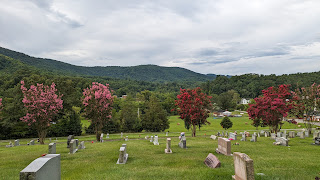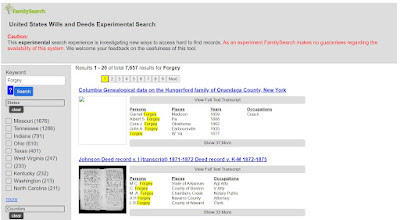I first discovered the value of a eulogy for family history research when I received one for a great-great aunt, Bridget aka Sister Mary Kathleen Mullen, from an aunt. She was a Catholic nun. The eulogy states she was from Galway; my father thought our Mullen family was from Cork. He probably was told his grandmother, Helen Mullen-Mason, left the port at Cork and thought the family lived there. The eulogy also gave the names of her parents, Patrick Mullen and Mary Huvane. I had never heard anything about the surname Huvane until then. My grandmother, Dorothy Mason-Kapple, and her siblings knew the maiden name of their grandmother, Mary Huvane-Mullen, but I didn't. I guess I just never asked. I should have asked more questions.
Relatives are a good source when looking for eulogies. The more relatives, including distant relatives, you collaborate with the more likely you can find something like a eulogy. I've also gotten prayer cards with information about the deceased from distant relatives.
After learning the maiden name of my great-great grandmother I began researching the surname Huvane. To some family members the name seemed foreign. They thought it might be Spanish? Maybe the name came from Spanish Armada survivors? Once I had internet access in the 1990s I was able to find Huvanes living in the San Francisco area. I made contact with them and they shared the information they had about the family, and they shared some research done in Ireland by a researcher there. He stated the name Huvane, a variant of Huane, was likely a variant of Hoban.
This Huvane family also attempted to help me learn more about my Mullen family. Our shared Huvane family relatives lived near the Mullens, in Pollaturick, Ireland, they of course were cousins of their family, and mine. My new cousins gave me contact information for a Mary Ellen Mullen-Thornton, they received from relatives in Pollaturick. She was the only Mullen closely related to me still alive, being that she was the first cousin of my grandmother Dorothy. The relative also stated that some of the Mullens lived in London. I wrote her a letter but never heard back. She was born in 1921 and was likely in poor health, or living in a care home when I wrote her. When I visited Ireland, and the townland of Pollaturick in 2019 a neighbor told me Mary Ellen was in a nursing home. The family hadn't lived on the land in decades because Mary Ellen's husband had land in another townland where she lived after her marriage.
Asking questions on Facebook in 2021 I discovered Mary Ellen Mullen-Thornton was still alive, and 100 years old. Until then I had no idea she was that old! I was very surprised. Her aunt, Sister Mary Kathleen Mullen, was 103 when she died. This family has a longevity gene.
Fast forward to December 2023. I learned that Mary Ellen had died in November 2022. This month is a busy month in the United States with Thanksgiving, and Christmas coming, so I missed that funeral stream on YouTube. Googling her name and the places she lived I found an obituary. Internet obituaries are free and easy to post so they are very common. Often funeral homes put these on their websites. Commonly these obituaries include a photo of the deceased, and sometimes there is a slideshow with multiple photos that include family members. I've seen photos going back to the deceaseds childhood. I've also seen videos posted with these obituaries.
A video produced by the family of my father Robert's first cousin can be viewed at this link . This video, with photos, helped me identify some unmarked photos.
Mary Ellen Mullen-Thornton's obituary provided the names of her children, which I didn't have. It confirmed two of her children lived in England, and one in London. The letter proved to be correct, one of her children did live in London. Great to see a photo of my grandmother's first cousin too!
















.jpg)









.jpg)


























